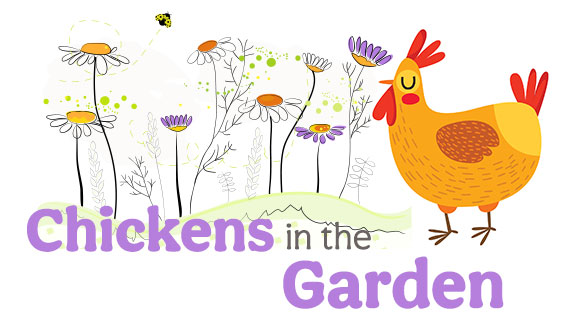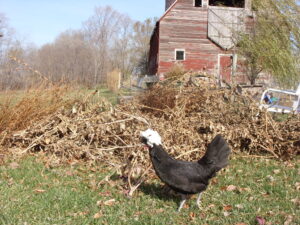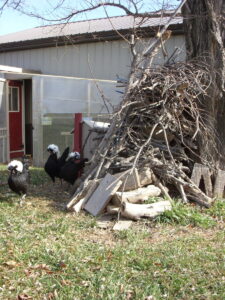Many homeowners are doing their part to save and protect our beneficial pollinators. However, it’s not uncommon for those efforts to stop after the first spring planting. To create a thriving pollinator habitat, we must provide food sources, nesting sites, roosting areas, and protective shelter throughout all four seasons—and that includes winter. Late fall is the perfect time to introduce some cold-season pollinator essentials to our landscape.
Ornamental Grasses
When spring and summer blooms are gone on annuals and perennials, ornamental grasses offer a winter show of color and provide food sources from seed heads as well as nesting material for birds. Fallen grass stalks are home for overwintering insects. Taller, dense grasses also provide roosting protection and shelter from cold winter winds. Grasses also serve as larval hosts for many of our butterflies and moths.
My pollinator habitat includes several ornamental grasses including blue grama (Bouteloua gracilis), big bluestem (Andropogon gerardii), fountain grass (Pennisetum alopecuroides), switchgrass (Panicum), and Miscanthus (numerous varieties with gorgeous winter color and attractive seed heads). Consider incorporating ornamental grasses of differing heights to create layers of shelter. This layered protection provides easy escape from predators and protection from severe weather.

I have a Certified Pollinator Habitat through the NE Extension. One of the many requirements is a 4-season habitat and winter shelter for beneficial pollinators.
Leave your Garden Bee
If you’re in the habit of cutting back and cleaning out your garden and raking up all your fallen leaves, you’ve eliminated the nesting material and shelter for most overwintering pollinators and other beneficial insects. Lack of nesting and overwintering material is one of the biggest factors leading to pollinator loss.
Hollow plants stems and branches are a favorite nesting site for pollinators. Carpenter bees, yellow-faced bees, leaf-cutter bees, moths, wasps, spiders, and numerous other beneficial insects use the cavities of stems for shelter and to lay eggs. In late winter- early spring before plants break dormancy, cut back flower stalks at varying heights for different sizes of insects. As spring approaches, you’ll begin to see insect activity. Leave cut stems in compost or bundle and leave for additional nesting sites.
Be sure to leave a thin layer of leaves on your lawn. As long as leaves aren’t smothering the turf in a thick mat, they’ll do no harm and will add additional nutrients and organic matter back into lawn. If you must rake, add the leaves to garden beds for added habitat.
Dead Trees and Limbs
In small backyards and densely built neighborhoods, dead trees are unsightly and often a safety concern. However, dead, decaying trees and fallen limbs offer an abundance of habitat for a wide variety of wildlife. When I moved onto my 2-acre mini-farm, a decaying Siberian elm was home to a family of wood ducks. Though wood ducks never returned, I’ve kept the dead elm. It’s now home or rest stop to a wide variety of wildlife, including many different species of woodpeckers, owls and other raptors, and of course, insects. It’s safely away from my house and away from any roads that might cause concern.
When brittle limbs fall, I drag them to the back where the pile of brush continues to grow, housing a large variety of overwintering birds and small mammals. When one large limb fell, I rolled it under the tree for a makeshift “bench”. It’s become a popular spot for senior pics.
Turf and Soil
While butterflies will migrate south to warmer temperatures, many beneficial pollinators prefer to stay home and ride out the winter. Much like bears, many insects hibernate over the winter. Upwards of 70 percent of bees nest in the ground, burrowing down several inches. Avoid disturbing soil in garden beds or around lawn. If you must move plants in the fall, disturb as little soil as possible.
Solitary bees as well as small colonies could be living right under your feet, so take note of any holes or nesting material and mark to avoid disturbance. Bees especially like dry areas of soils in sunny spots. Avoid throwing inorganic salt alongside driveways or walkways that might get shoveled or blown onto turf where ground-nesting pollinators might be overwintering.
Most efforts to incorporate a pollinator habitat often stop at ornamental plantings in our spring and summer landscapes. A true pollinator habitat must incorporate plantings and other essentials for all four seasons, with special forethought for harsh winter climates.
According to research, one of every three bites of food we eat is dependent on pollinators (Natural Resources Conservation Service). A few little changes in our own backyard can help our pollinators survive through not only this season, but many seasons to come.


